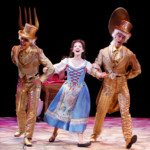In addition to being a great source of exercise, dance can be both emotionally and physically therapeutic for many. Called, Dance Movement Therapy, or DMT, it’s the psychotherapeutic use of movement, in the form of dance, which supports intellectual, emotional and motor functions of the body.
As a form of what is referred to as, expressive therapy, DMT looks at the correlation between movement and emotion. The theory of DMT is based on the belief that the body and the mind interact. Derived from the dualist mind-body premise, dance movement therapists belief both the conscious and unconscious movement of the person affects their total functioning, and reflects the individual’s personality. Therefore, the therapist-client relationship is partially based on nonverbal cues, like body language. Because movement is said to have a symbolic function, which helps in understanding the self, exercises like movement improvisation allow the client to experiment with new way of being.
A typical DMT session has four main stages. They are preparation, incubation, illumination, and evaluation. According to the American Dance Therapy Association, dance is “the psychotherapeutic use of movement as a process which furthers the emotional, social, cognitive, and physical integration of the individual.”
Historically, dance has been used as a source of therapy for thousands of years. In early human history, it was used as a healing ritual, to influence fertility, birth, sickness, and death. During the time period of 1840 to 1930, a new philosophy of dance developed in Europe and in the United States that said movement could have an effect on the mover, meaning dance was not simply an expressive art. But, the actual establishment of dance as a therapy did not occur until the 1950’s, which was spearheaded by future American Dance Therapy Association founder, Marian Chance.
The characterization of Dance Movement Therapy was put together in two separate waves. The first was lead by Marian Chance. She is considered the principal founder of what is now dance therapy in the United States. In 1942, she introduced dance to western medicine, through years of work and research. Chance was a former dancer, choreographer, and performer. After opening her own dance school in Washington D.C., she began to realize the effects dance and movement had on her students. The reported feelings of wellbeing from her students began to attract the attention of the medical community, and some local doctors began sending their patients to her classes. She was soon asked to work at St. Elizabeth’s Hospital in Washington D.C. after psychiatrists began realizing the benefits their patients were receiving from attending Chance’s dance classes. In 1966 Chance became the first president of the American Dance Therapy Association, which is an organization she and several other DMT pioneers founded.
The second wave of Dance Movement Therapy came around the 1970’s to the 1980’s. It sparked much interest from American therapists. During this time, therapists began to experiment with its claims and theories. As a result of therapist’s experiments, DMT was categorized as a form of psychotherapy. That is where today’s implementation of Dance Movement Therapy evolved.
If you need a little Dance Therapy in your life, come take classes at OSMD. Check out our website today to see how to fit some therapy into your life! https://omahaschoolofmusicanddance.com/ballet-classes-leap-n-learn-ages-6-9-omaha-ne/



